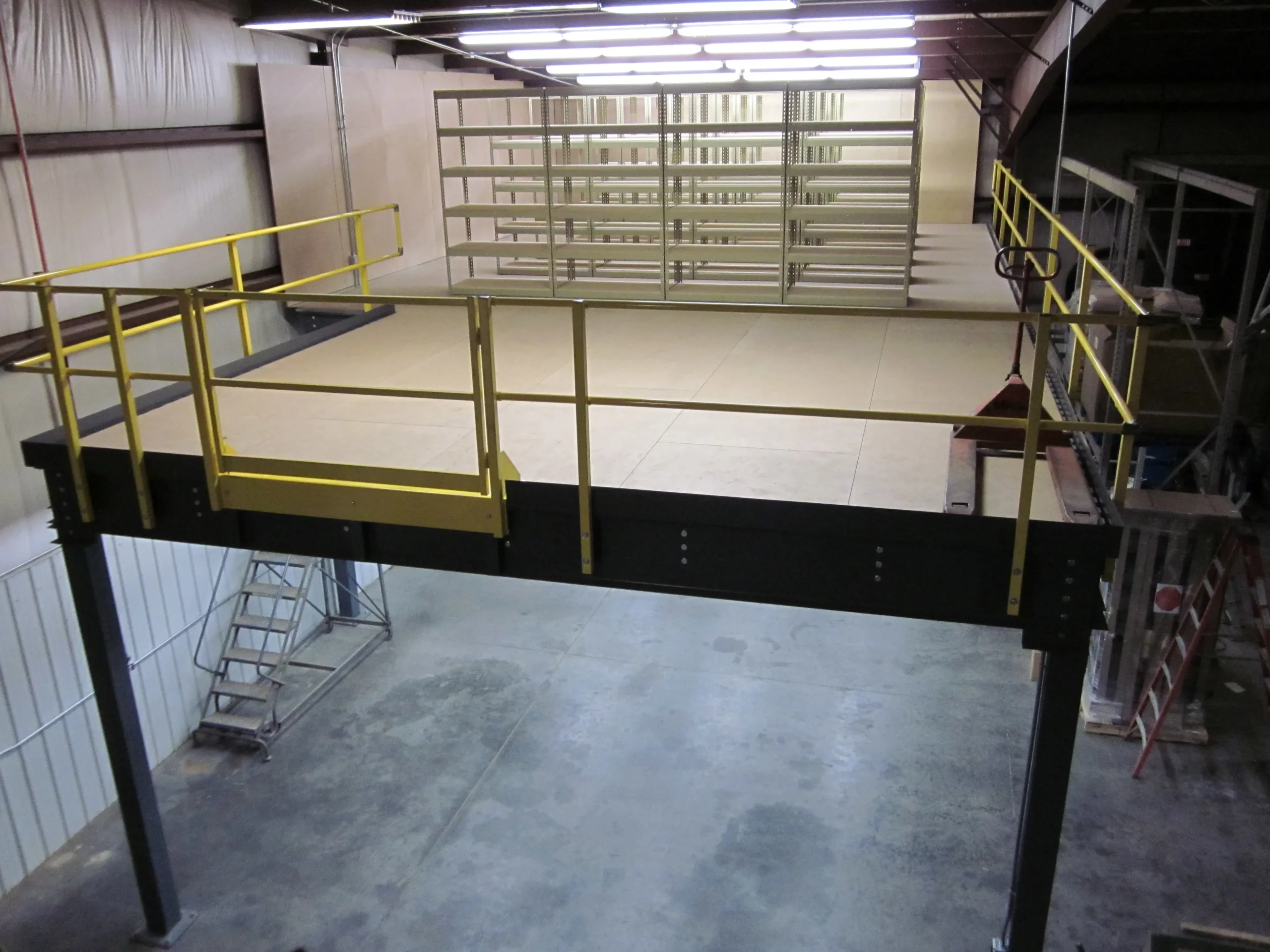Planning to build a mezzanine floor? It’s a fantastic way to maximize space, but before you start, understanding the legal height requirements is crucial. These regulations ensure your mezzanine is safe, comfortable, and compliant with building codes.
Mezzanine Legal Height: What You Need to Know to Stay Safe (and Legal!)
Think of mezzanine legal height requirements as the safety net for your elevated space. They ensure adequate headroom to prevent accidents and guarantee the structure can handle the additional weight.
The Lowdown on Legal Height Requirements
The International Building Code (IBC) and other regulatory bodies set specific height standards for mezzanines:
- Minimum Height: The space between the mezzanine floor and the ceiling above it must be at least 7 feet. Similarly, there needs to be at least 7 feet of clearance between the mezzanine floor and the floor below. This translates to a minimum ceiling height of 14.7 feet on your ground floor to accommodate a mezzanine.
- Clear Height: This refers to the vertical clearance below the mezzanine’s lowest point, like beams or pipes. A minimum of 7 feet is mandated to prevent head injuries.
Why Sweat the Small Stuff?
Sticking to these codes might seem like a hassle, but the benefits far outweigh the perceived drawbacks:
Pros:
- Safety First: Adhering to legal height requirements prioritizes the well-being of everyone using the mezzanine, minimizing the risk of head injuries or structural failures.
- Legal Peace of Mind: Compliance with building codes keeps you on the right side of the law, helping you avoid potential fines, lawsuits, and other legal ramifications.
- Structural Integrity: Proper height ensures your mezzanine can safely support its intended weight without compromising the existing structure.
Cons:
- Simply put, there are no downsides to following the rules. Compromising safety and risking legal issues for a few extra inches isn’t worth it.
Factors to Consider Beyond Height
While meeting minimum height requirements is essential, a successful mezzanine project considers these additional factors:
- Floor Loading Capacity: Determine how much weight your existing floor can support, factoring in the weight of the mezzanine structure itself and everything you plan to put on it.
- Deflection Limits: This refers to the degree to which the mezzanine floor will bend under load. Excessive deflection can compromise stability and comfort.
- Guardrails: Sturdy guardrails are essential for preventing falls. Ensure they meet the required height and strength standards.
For additional information on these aspects, refer to our comprehensive guides:
- Mezzanine Floor Headroom Clearance
- Mezzanine Structure Safety Standards
- Mezzanine Floor Loading Guidelines
Building a mezzanine is exciting! By understanding and adhering to legal height requirements, you can create a safe, functional, and code-compliant space.
What are Mezzanine Floor Code Requirements?
Mezzanine floor code requirements primarily focus on safety and functionality. They ensure the space is comfortable, accessible, and equipped to handle potential hazards.
Key Code Requirements:
- Clear Height: A minimum of 7 feet of clear space is required both above and below the mezzanine floor. This allows for comfortable movement, accommodates equipment, and ensures adequate headroom.
- Floor Area: To avoid overcrowding and maintain clear pathways on the ground floor, building codes typically limit mezzanine floor space to one-third of the total room area.
- Lighting: Sufficient lighting is crucial for safe navigation and tasks performed on the mezzanine.
- Ventilation: Proper ventilation systems are essential to maintain air quality, especially in workspaces.
- Fire Protection: Mezzanines must meet fire safety standards, including the use of fire-resistant materials, sprinkler systems, and adequate fire escapes.
Here’s a table summarizing these requirements:
| Feature | Requirement | Why it Matters |
|---|---|---|
| Clear Height | At least 7 feet above and below the mezzanine floor | Prevents head injuries, allows for comfortable movement, and facilitates equipment placement. |
| Floor Area | Maximum one-third of the room floor area | Ensures adequate space for movement and egress, preventing overcrowding on the ground floor. |
| Lighting | Sufficient for safe movement and tasks | Enhances visibility and minimizes the risk of accidents. |
| Ventilation | Adequate to maintain air quality | Prevents air pollution and creates a comfortable and healthy environment. |
| Fire Protection | Fire-resistant materials, sprinklers, etc. | Protects occupants in the event of a fire. |
Remember, these are just the basic requirements. Always check with your local building department for specific regulations in your area.
How Does OSHA Regulate Mezzanine Height?
The Occupational Safety and Health Administration (OSHA) plays a vital role in ensuring mezzanine safety in workplaces. Their regulations focus on preventing falls, ensuring adequate clearance, and promoting accessibility.
Key OSHA Regulations:
- Clearance: OSHA mandates a minimum of 7 feet of headroom under the mezzanine and 7 feet of clearance between the mezzanine floor and the ceiling above. This ensures comfortable movement and accommodates equipment.
- Guardrails: Sturdy guardrails are mandatory along open sides of the mezzanine to prevent falls and provide a safe working environment.
- Fall Protection: Openings in the mezzanine floor, such as those for stairs or conveyors, must be covered with grates or other fall protection systems.
- Accessibility: OSHA regulations emphasize accessibility for all workers, requiring ramps, lifts, or other accommodations to ensure safe access for individuals with disabilities.
For detailed information, refer to OSHA’s official Mezzanine Safety Guide: OSHA Mezzanine Safety Guide
How do I Determine the Legal Height for My Mezzanine?
Determining the legal height for your mezzanine involves a few key steps:
- Consult Local Building Codes: Your first step is to research local building codes, as they vary by location. These codes outline the specific height limitations applicable to your area.
- Measure Your Space: Measure the height of the room where your mezzanine will be installed. This measurement, along with your local building codes, will determine the maximum allowable height of your mezzanine floor.
- Factor in Clear Height: Remember the 7-foot rule? Ensure you have at least 7 feet of clear space above and below the mezzanine floor, taking into account any hanging light fixtures or other elements.
- Calculate Floor Area: As a general rule, your mezzanine floor space shouldn’t exceed one-third of the total room area. This ensures adequate space on the ground floor for movement and egress.
- Design with an Open Concept: Minimize walls and obstructions to maximize natural light and create a more open, spacious feel.
Additional Tips:
- Prioritize Fire Safety: Ensure your mezzanine design complies with fire safety regulations, including fire escapes, sprinklers, and other safety features.
- Consider Intended Use: The intended purpose of your mezzanine might influence height requirements. For instance, a mezzanine used for storage may have different regulations than a living space.
- Consult a Professional: When in doubt, consult an architect or structural engineer. They can help you navigate building codes, ensure compliance, and address any structural concerns.
Building a safe and compliant mezzanine starts with understanding legal height requirements. By following these guidelines and consulting with professionals, you can create a functional and enjoyable elevated space that meets all necessary regulations.
- Black Backsplash With White Cabinets: A Bold Kitchen Design - November 5, 2025
- Black and White Kitchen Backsplash: Ideas for Timeless Style - November 4, 2025
- Kitchen Backsplash Ideas: Fresh Looks to Upgrade Your Space - November 1, 2025










